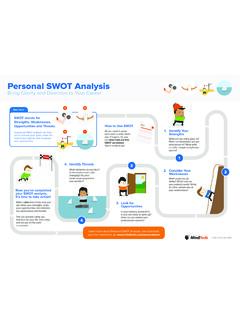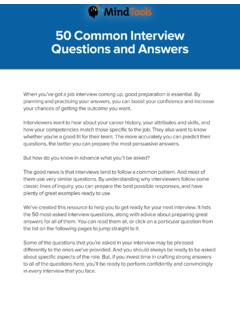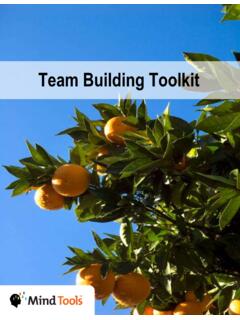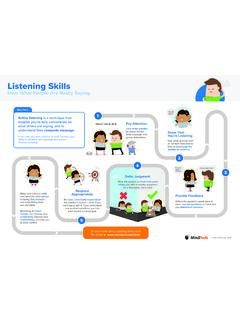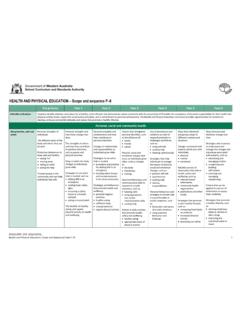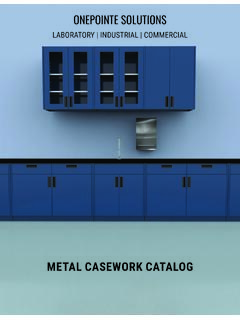Transcription of A Quick Guide to Problem Solving - Mind Tools
1 A Quick Guide to Problem Solving | mind Tools Ltd., 2007-2011. 1 A Quick Guide to Problem Solving A Quick Guide to Problem Solving | mind Tools Ltd., 2007-2011. 2 A Quick Guide to Problem Solving This e-book is published by mind Tools Limited, of 2nd Floor, 145-157 St John St, London, EC1V 4PY. Version Copyright mind Tools Ltd, 2007-2011. All rights reserved. This e-book is protected by international copyright law. You may only use it if you have downloaded it directly from the site, or if you have received it under license from mind Tools Ltd. Cover image iStockphoto/portishead1 A Quick Guide to Problem Solving | mind Tools Ltd., 2007-2011. 3 Contents Introduction .. 4 A Problem Solving Process .. 5 Step 1: Defining the Problem .. 6 Step 2: Understanding the Problem Environment .. 6 Step 3: Generating Alternative solutions .. 9 Step 4: Analyzing Risks, Assumptions, and Impacts.
2 11 Step 5: Selecting the Best Solution ..11 Conclusion ..12 Have you found this e-book useful? ..15 A Quick Guide to Problem Solving | mind Tools Ltd., 2007-2011. 4 A Quick Guide to Problem Solving Introduced by mind Tools CEO, James Manktelow In business, it s essential to be able to solve problems effectively. Fortunately, there are many powerful Tools that you can use to look at a Problem , determine the nature of the situation you re dealing with, find possible solutions , and then evaluate those solutions , so that you can select and implement the best one. But this wealth of Tools and techniques creates a Problem in itself: which Tools should you use on which occasion? And how do you pinpoint the most useful Tools for the Problem you re facing? This e-booklet helps you address these issues. We take you through a simple but flexible Problem - Solving process.
3 As we go, we point you toward useful Tools that will help you deal with many of the different types of situation that you may encounter. With these Tools , you ll be able to start tackling problems more effectively and with increased confidence that you can overcome the problems that you face. I hope you enjoy this Guide ! James Manktelow, CEO, A Quick Guide to Problem Solving | mind Tools Ltd., 2007-2011. 5 A Problem Solving Process Problems, problems, problems. Day in and day out, we re surrounded by them, and Solving them is an essential workplace survival skill. It s good to know that there are many powerful Problem - Solving Tools that can help in determining the nature of the issue you re dealing with, in generating good options, in analyzing risks and impacts, and, finally, in selecting the best solution. However, the sheer number and range of Problem - Solving Tools creates its own Problem : How do you identify the right Tools for your situation?
4 While it would be great to have a one size fits all Problem - Solving method, the fact is that most Problem Solving requires flexibility, and the ability to choose the right Tools for the job. This Guide to Problem Solving is designed with exactly that in mind . It helps you learn the key steps of Problem Solving , and it teaches you some of the most useful Tools and approaches. Read on to discover more about some of the most popular Tools for Problem Solving , how to apply them with flexibility, and how to use them to good effect! Five Key Steps Most approaches to Problem Solving boil down to five steps: 1. Defining the Problem . 2. Understanding the Problem environment. 3. Generating alternative solutions . 4. Analyzing risks, hidden assumptions, and unexpected impacts. 5. Selecting the best solution. In this Guide , we look at each of these steps, and what it involves.
5 Then we discuss some of the Tools available to help you, and look at when you should consider using them. Tip You don t always have to follow these steps in sequence. For example, sometimes there s an intuitively obvious solution. Here, all you really need to do is understand the risks involved, so that you can decide whether those risks are acceptable. At other times, you may prefer to start at Step 4 generating alternative solutions and then go back to Steps 1-3 to check that they re valid, before finishing off with Steps 5 and 6. The key is to be flexible, and adopt the approach that best suits the situation. A Quick Guide to Problem Solving | mind Tools Ltd., 2007-2011. 6 Step 1: Defining the Problem You first need to check whether it s worth spending time to solve this Problem . Is the Problem significant and strategic? Will Solving it add value to you, your organization, or your customers?
6 And if it should be solved, is it your responsibility to do so? If not, consider leaving the Problem unsolved or pass it on to the person whose responsibility it is to deliver a solution. If you decide to go ahead, then it s often worth investing some time and effort in fully understanding the Problem . This is particularly the case when you re dealing with problems that will take several months to solve. In this situation, it s worthwhile to determine before you start that you re Solving the true Problem rather than just treating the symptoms of a deeper, underlying issue. To do this, consider using the Five Whys technique, Cause and Effect Analysis, or CATWOE. Of these three Tools , Five Whys is the simplest and is ideal for smaller problems. It can, however, lead you down a single path where you ignore other options. Cause and Effect Analysis and CATWOE help you more possible causes of the Problem , so they re best for larger problems, and for those with a greater potential impact.
7 If you re dealing with a large Problem , you can make it more manageable by using Drill Down to break it into parts. You can then tackle each part separately. Browse the toolbox below to find out more about these Tools . Step 1 Toolbox Five Whys This simple but effective tool prompts you to ask why the Problem exists. After that, you keep on asking why? to those answers until you uncover the real root cause of the Problem . More >> Cause and Effect Analysis This technique involves drawing a fishbone-like diagram that helps you brainstorm the possible underlying causes of your Problem . This pushes you to think about many more of the possible causes of your Problem than you might naturally consider. More >> CATWOE CATWOE helps you look at the situation from a number of different points of view from customer perspectives to environmental constraints so that you can make sure that you re Solving the right Problem , and not just a symptom of a larger Problem .
8 More >> (Members only) Drill Down This helps you break down a large and complex Problem into its component parts. By doing so, you can develop plans that deal with each of these parts. Drill down also helps you identify where you need to conduct more detailed research. More >> A Quick Guide to Problem Solving | mind Tools Ltd., 2007-2011. 7 Step 2: Understanding the Problem Environment Sometimes people take this step, the environmental analysis, intuitively. For smaller problems, you may not need to go through any elaborate investigation to understand your current situation. If, however, you want to make significant changes, or if you need to have a strong grasp of the big picture before moving ahead, then this step is essential. Perhaps the most useful tool for understanding your environment is a SWOT Analysis. Used on a personal, organizational, or competitive basis, this tool helps you identify the strengths, weaknesses, opportunities, and threats that are related to the Problem at hand.
9 By using this technique, you can think about these questions: What strengths and opportunities can you build upon to come up with a solution? What weaknesses and threats do you need to keep in mind when you evaluate and eventually choose a solution? Depending on the situation, other useful techniques include Porter s Five Forces, PEST Analysis, and Value Chain Analysis. If your Problem involves issues with a process, you can often identify where problems lie by mapping that process with Flow Charts or Swim Lane Diagrams. Browse the toolbox on the next page to find out more about these Tools . A Quick Guide to Problem Solving | mind Tools Ltd., 2007-2011. 8 Step 2 Toolbox SWOT Analysis SWOT Analysis is a simple but powerful framework for analyzing your Strengths and Weaknesses, as well as the Opportunities and Threats that you face in your specific situation.
10 This helps you focus on your strengths, minimize threats, and take the greatest possible advantage of the opportunities that are available to you. More >> Porter s Five Forces This simple but powerful tool allows you to see where power lies in a business situation. This is often fundamental to understanding what you can expect from other people and organizations. Five Forces Analysis is based on an analysis of supplier power, customer power, threat of substitution, ease of new entry, and competitive rivalry. This tool is particularly useful because it helps you understand both the strengths and weaknesses of your current competitive position, as well as those of a strategic position you re looking to move into. More >> PEST Analysis PEST Analysis is a simple but important and widely used tool that helps you understand the big picture of the Political, Economic, Sociocultural, and Technological environment in which you re operating.


